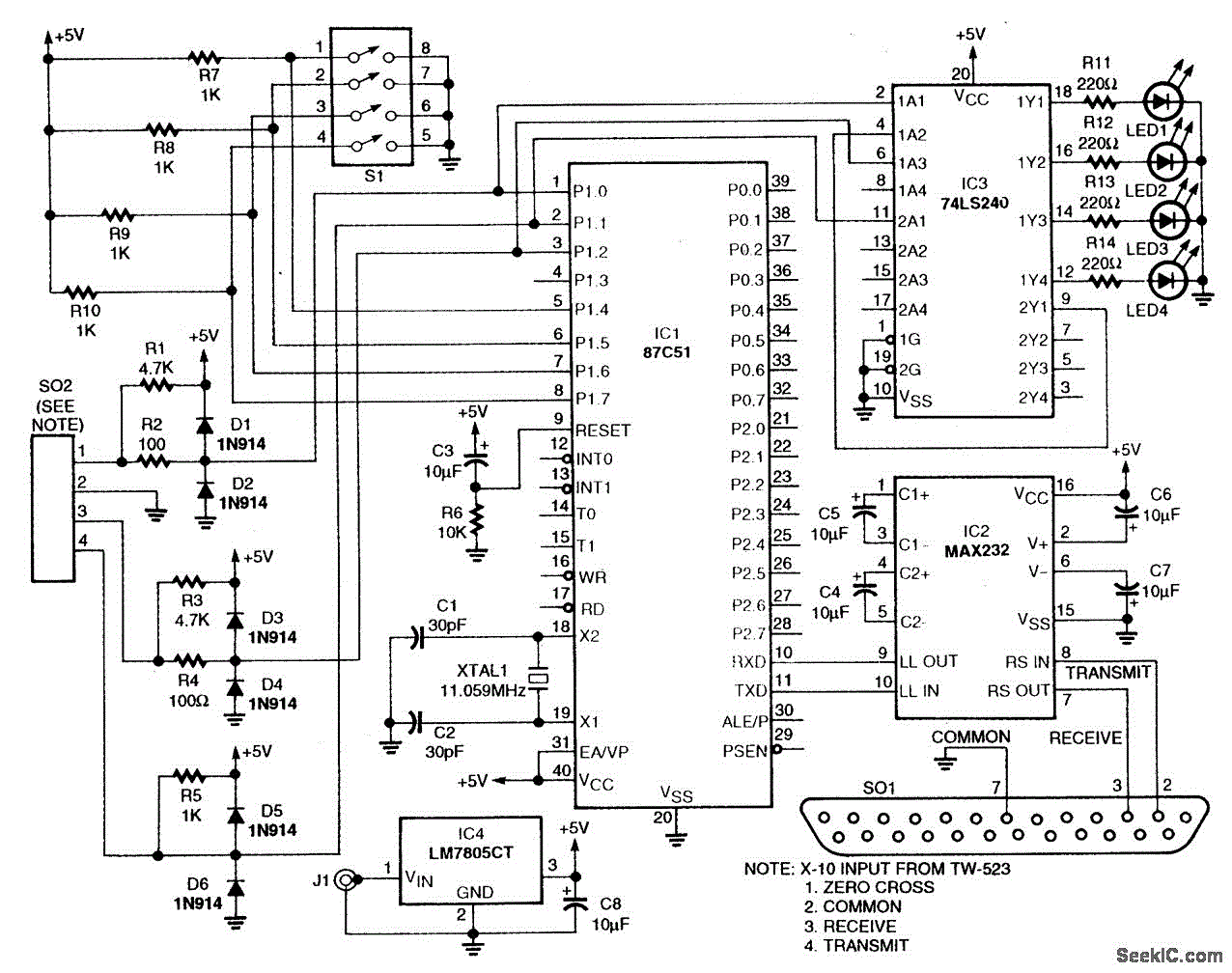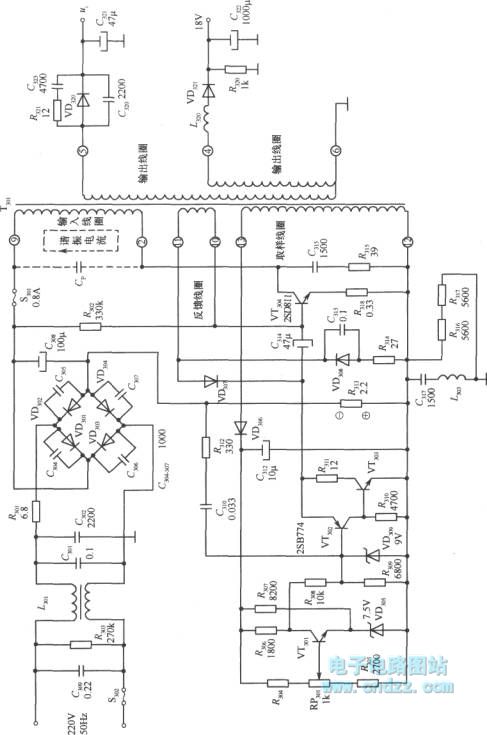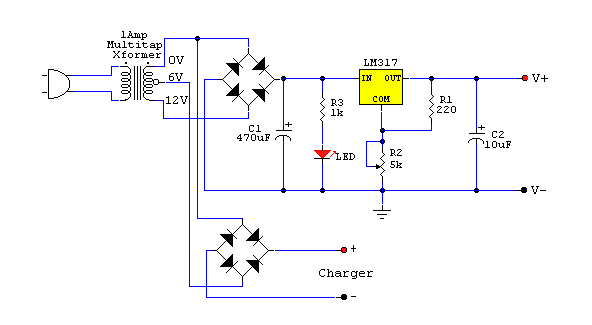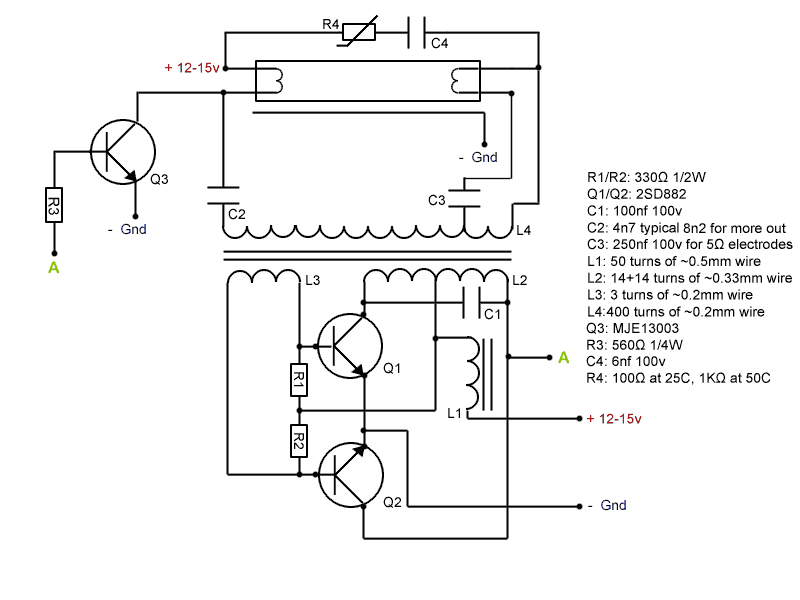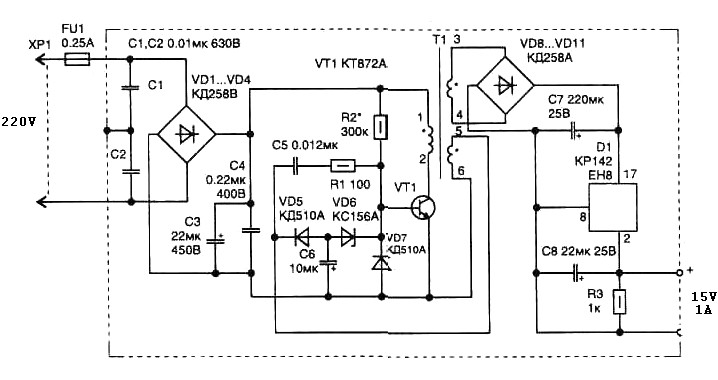
Cold cathode fluorescent lamp CCFL power supply

Cold Cathode Fluorescent Lamps (CCFLs) are commonly employed to illuminate the LCD displays of portable computers. These lamps necessitate a high-voltage sine-wave drive. The circuit designed for this purpose provides such a drive and allows for the continuous and smooth variation of lamp intensity from zero to full brightness. It is important to note that a Tektronix probe type P-6009, or the types P6013A and P6015, must be utilized to measure the L1 output. Most oscilloscope probes will fail if used for this measurement unless they are specifically rated for wideband high voltage.
The CCFL drive circuit typically consists of a high-frequency oscillator, a transformer, and a control mechanism for adjusting the output voltage. The oscillator generates a high-voltage sine wave, which is then stepped up by the transformer to the required voltage level for the CCFL. The transformer is designed to handle high-frequency signals and must be rated for the power requirements of the CCFL.
To enable smooth dimming, a pulse-width modulation (PWM) technique is often employed. This involves varying the duty cycle of the high-frequency signal, effectively controlling the average power delivered to the CCFL. This method allows for fine adjustments in brightness without flickering, providing a stable light output across the full intensity range.
For measuring the output voltage and waveform, the circuit requires specialized high-voltage probes. The Tektronix P-6009, P6013A, and P6015 probes are designed for high-voltage applications and can safely measure the output without risk of breakdown. Standard oscilloscope probes are not suitable for this application due to their lower voltage ratings, which could lead to failure or inaccurate readings.
In summary, the CCFL drive circuit is an essential component for backlighting LCD displays, providing both the necessary high-voltage drive and the capability for adjustable brightness. Proper measurement techniques and equipment are critical for ensuring safe and accurate performance of the circuit.CCFLs are often used to backlight the LCD displays of portable computers Such lamps require a high-voltage sine-wave drive. This circuit provides such drive and permits lamp intensity to be varied continuously and smoothly from zero to full intensity.
Notice that a Tektronix probe type P-6009 acceptable ‰or types P6013A and P6015 preferr ed ‰probes must be used to read the L1 output The vast majority of oscilloscope probes will break down if used for this measurement unless the probes are rated for wideband high voltage 🔗 External reference
The CCFL drive circuit typically consists of a high-frequency oscillator, a transformer, and a control mechanism for adjusting the output voltage. The oscillator generates a high-voltage sine wave, which is then stepped up by the transformer to the required voltage level for the CCFL. The transformer is designed to handle high-frequency signals and must be rated for the power requirements of the CCFL.
To enable smooth dimming, a pulse-width modulation (PWM) technique is often employed. This involves varying the duty cycle of the high-frequency signal, effectively controlling the average power delivered to the CCFL. This method allows for fine adjustments in brightness without flickering, providing a stable light output across the full intensity range.
For measuring the output voltage and waveform, the circuit requires specialized high-voltage probes. The Tektronix P-6009, P6013A, and P6015 probes are designed for high-voltage applications and can safely measure the output without risk of breakdown. Standard oscilloscope probes are not suitable for this application due to their lower voltage ratings, which could lead to failure or inaccurate readings.
In summary, the CCFL drive circuit is an essential component for backlighting LCD displays, providing both the necessary high-voltage drive and the capability for adjustable brightness. Proper measurement techniques and equipment are critical for ensuring safe and accurate performance of the circuit.CCFLs are often used to backlight the LCD displays of portable computers Such lamps require a high-voltage sine-wave drive. This circuit provides such drive and permits lamp intensity to be varied continuously and smoothly from zero to full intensity.
Notice that a Tektronix probe type P-6009 acceptable ‰or types P6013A and P6015 preferr ed ‰probes must be used to read the L1 output The vast majority of oscilloscope probes will break down if used for this measurement unless the probes are rated for wideband high voltage 🔗 External reference
